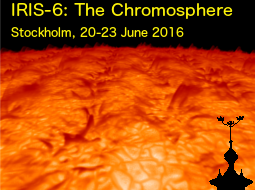Speaker
Krzysztof Barczynski
(Max-Planck-Institute for Solar System Research)
Description
To study the relation between the different atmospheric layers we investigate the
emission from those regions in terms of spatial correlation. These flux-flux
relations as well as the relation of the emission to the underlying magnetic field
contain vital information on how the energy is transported upwards in the solar
atmosphere. We use data from the Interface Region Imaging Spectrograph (IRIS), in
particular from the Mg II k line, C II, and Si IV. In a stratified model these would
nicely span the layers from the temperature minimum through the upper chromosphere
(Mg II) and then into the transition region (C II, Si IV). Raster scans in these
lines are accompanied by data in the 1600 A channel of AIA and and photospheric
magnetograms from SDO/HMI. Calculating the spatial correlation between these
different data sets as well as fitting a power law we characterise the relationship
between magnetic field and intensities and between intensities from different parts
of the solar atmosphere. We find that in the plage areas of an active region the
correlation between the magnetic field and the line intensity is highest in the low
chromosphere. Getting higer up through the atmosphere, moving from Mg II k1 to k2 to
k3 and then to C II and Si IV we find a monotonic decrease of the spatial
correlation. At the same time the index for power law fit between the quantities gets
steeper going higher up into the atmosphere. This provides the interesting result
that while the direct relations becomes weaker at higher temperatures, probably due
to slight spatial mismatch of structures seen at high resolution, the emission from
higher reacts increasingly more sensitive to the magnetic field. While this is well
known from e.g. flux-flux-relation in the stellar context, here we show that this
trend is found even within the solar chromosphere, i.e. when scanning through the Mg
II line profile from k1 to k3.
Primary author
Krzysztof Barczynski
(Max-Planck-Institute for Solar System Research)

